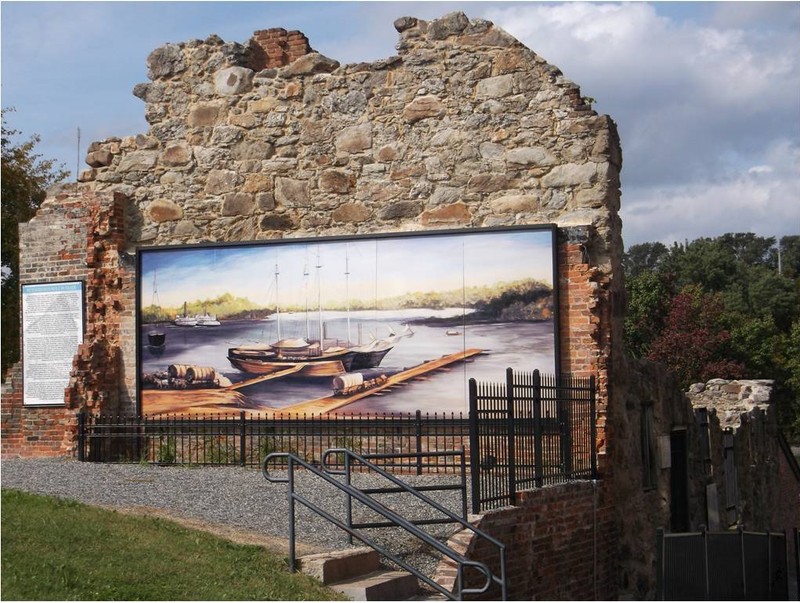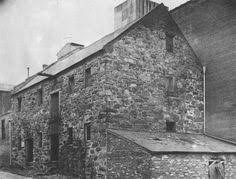Peter Jones Trading Station
Introduction
Text-to-speech Audio
Images
Peter Jones Trading Station today

Peter Jones Trading Station before 1980 fire

Backstory and Context
Text-to-speech Audio
In response to the 1644 Indian massacre, the Virginia General Assembly in March1646 directed that Fort Henry be built at the falls of the "Appomattocke River" to defend English settlers south of the James River. Shortly thereafter, the Indians and the Virginia colony signed a peace treaty. In October1646 the Assembly declared Captain Abraham Wood caretaker of the fort. The current Peter Jones Trading Station site was within the tract of land occupied by the fort.
The first documentary evidence of the existence of this building is in the 1810 land tax book. In James Durell's 1816 insurance policy, he insured a stone lumber house for $3000. The dimensions of this building were 54 by 28 feet, the same dimensions as the current structure. In 1825, an extant document referred to this structure as the Old Magazine. It is entirely possible that this structure housed almost all of the gunpowder in the city from 1785-1791.
Fort Henry was extremely important to early colonial exploration. Between 1650 and 1674 four major explorations ended at Fort Henry, and three left from this site. Fort Henry was the southwest frontier in Virginia, and the last safe refuge for the English settlers in this area. The only places where pre-1674 English explorations began east of the Mississippi River were Jamestown, Boston, Charleston, Albany, the western Pennsylvania frontier, and Fort Henry {Petersburg). These explorations achieved many milestones, including the first English explorers to cross the Appalachian Mountains and the mid-18th century justification for the English claim to the Ohio Valley.
By 1675, Abraham Wood and his son-in-law Peter Jones owned and operated a major trading operation from this site. Fort Henry "became the center of a vast Indian trade with the hinterland." In the 1730s when William Byrd, II planned the settlements at the falls of the James and Appomattox Rivers, he named the latter city Petersburg in honor of Peter Jones. The building on this site has served many purposes over the years including a trading station, magazine, prison during the Civil War, carpentry or cabinet shop, box factory, and tobacco stemmery. A fire in 1980 destroyed a considerable portion of the building, which increases the difficulty of authoritatively determining its date of construction. Approximately two-thirds of the stonewalls and a chimney with two fireplaces remain.
Sources
Entzminger, G. Contextual History of the Peter Jones Trading Station.
National Park Service. "Petersburg Old Town Historic District." National Register of Historic Places Inventory-Nomination Form. Prepared by Virginia Historic Landmarks Commission staff. Washington, D.C.: National Park Service, 1980.
http://www.dhr.Virginia.gov/registers/Cities/Petersburg/123-0097_Petersburg_Old_Town_HD_Final_Nomination.pdf
